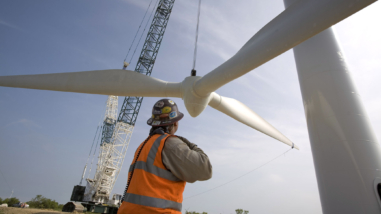How Climate Leadership Initiative is accelerating climate philanthropy
The Hewlett Foundation has, for well over a decade, supported organizations around the globe that advance ambitious solutions to the climate crisis. The individuals within these institutions are smart, dedicated, effective, and committed to ensuring more voices are part of advocating for policies and practices that lead to a sustainable, healthy, and prosperous future for all. This feature article is part of a series highlighting grantees that are moving the needle on one of the most pressing issues of our lifetime.
A compounding effect is also at play: The growth in climate philanthropy has prompted larger-scale thinking, which translates to new philanthropists feeling more comfortable with solutions that require bigger investments. “The ability to see solutions becomes easier for donors,” Kitt said, adding that in years past “the climate community would dream in $5 million or $10 million increments. But when you ask, ‘what does it take to win?’ the community starts to scale up and think in terms of transformational change.”
Hewlett’s grant to CLI — like most of our giving — comes in the form of flexible funding. According to Kitt, that style of giving frees her team to “be trusted advisors to those who are new to climate philanthropy — and to be thinking about ‘who are the donors who don’t know about this yet?’”
The CLI team takes that trusted advisor role seriously as it helps welcome families into the climate philanthropy space. “We’re meeting them where they are to help them learn how philanthropy is a tool and how it works with other tools for change — including strategic litigation, communications, finance, and technical assistance to government,” Kitt shared. “We’re helping them set the criteria, make a first set of goals, and source a portfolio [of grantees].”
Hewlett’s giving to CLI also includes “beyond-the-grant-dollars” support because established funders are essential for bringing in more necessary funding into climate philanthropy, Kitt said. Sharing expertise and grantmaking strategies and being willing to venture into new territory, for example, “gives confidence to the newcomers.”
Established funders can also help by working in collaboration with new donors on large-scale strategies; by helping grantees to translate their fundraising materials — often crafted for experienced and technically knowledgeable donors — for those who are new to the field; and by devoting time and energy to sharing knowledge and steward ongoing partnerships with new givers.
The climate crisis remains daunting, but the energy from new philanthropists has moved Kitt well past the despair sparked by that 2018 New York Times story. “I’m most excited anytime I see momentum,” she said. “Momentum is when the doers get resources — and get to soar.”





